News

Coughlin, Citro, and Criswell part of comprehensive UV light survey
Posted
Assistant Professor Michael Coughlin, postdoctoral researcher Annalisa Citro, and graduate student Alexander Criswell of the Minnesota Institute for Astrophysics are part of a new mission that has just been selected to conduct a comprehensive survey of ultraviolet light spanning the entire sky

Assistant Professor Michael Coughlin has been awarded a 2024 McKnight Land-Grant Professorship
Posted
Assistant Professor Michael Coughlin has been awarded a 2024 McKnight Land-Grant Professorship, which recognizes outstanding accomplishments and promise among the University's assistant professors.
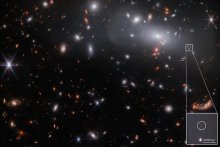
The (Brief) Diary of a Supernova
Posted
Recently the James Webb Space Telescope captured, in a single image, three separate moments during the death of a star nine billion years ago. Here’s how to view it

Researchers discover tiny galaxy with big star power using James Webb telescope
Posted
Galaxy is the smallest ever discovered at this distance—around 500 million years after the Big Bang
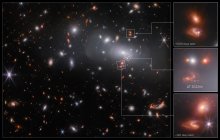
MIfA Researchers are Early JWST Users
Posted
MIfA Faculty, Postdoctoral Researchers, and Graduate Students have been busy analyzing JWST observations.

Student-planned NuSTAR observation reveals hidden light shows on the Sun
Posted
Students at the School played a key role in planning a NuSTAR solar observation which could help shed light on one of the Sun’s biggest mysteries. UMN physics grad students Marianne Peterson and Reed Masek, as well as recent physics Ph.D. recipient Jessie Duncan, under the guidance of Associate Professor Lindsay Glesener, of the School of Physics and Astronomy, all worked on a successful proposal to NASA to use the NuSTAR (Nuclear Spectroscopic Telescope Array)--typically used to view bodies outside the solar system such as massive black holes and collapsed stars-- to observe the Sun. The group is also actively analyzing the data obtained from the observations.
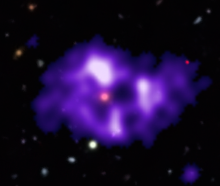
Computer Picks a Mysterious Radio Object
Posted
A team co-led by MIfA Professor Emeritus Lawrence Rudnick tapped a computer algorithm to search for unusual objects in the radio sky. One of its choices is this mysterious object, given the moniker SAURON, likely the result of a massive explosion in a distant galaxy, and, tantalizingly, perhaps the merger of a pair of super-massive black holes.
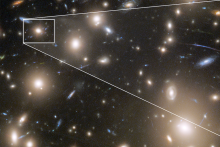
Kelly leads study of Red-supergiant supernova images
Posted
Minnesota Institute for Astrophysics Professor Patrick Kelly led a team that has measured the size of a star dating back more than 11 billion years ago using images that show the evolution of the star exploding and cooling. The research could help scientists learn more about the early Universe.

Ringleader: New Faculty Member is Expert in Planetary Physics
Posted
This fall, the School of Physics and Astronomy will welcome Ali Sulaiman to the space physics group.
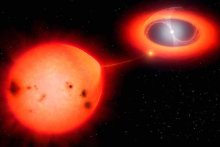
Woodward research takes a look at the fastest nova on record
Posted
A research report, co-authored by Professor Charles Woodward of the Minnesota Institute for Astrophysics describes the unusual quirks of V1674 Hercules, the fastest nova ever on record.